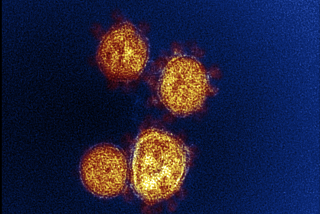Cancer: More than just bad luck?
New research has found that environmental exposures, lifestyle choices and other factors that could be changed or avoided account for between 70% and 90% of the gene mutations that make cancerous tumors progress, leaving “intrinsic factors” to account for the minority of malignant tumors.
Among cancer researchers, 2015 may be remembered as the year that the role of bad luck in cancer’s origins became a key object of debate. The central question: Are random errors in DNA replication (a factor intrinsic to cellular processes themselves) the most common catalyst for cancer’s mad replication of cells? Or do external factors -- ultraviolet radiation exposure, cigarette smoking, obesity or viruses -- play a more important role in prompting genetic mutations that jump-start cancer’s runaway cell growth?
See the most-read stories in Science this hour >>
As researchers have refined their understanding of how cancer begins, a debate that was long abstract has become very real. Scientists can now observe, measure and model the malignant transformation of stem cells and progenitor cells that leads to tumor growth, and show how different kinds of cancers gain a foothold. Then, using epidemiological data of cancer rates in a population, they can reckon how often such events probably occur.
In Science magazine at the beginning of 2015, precisely this kind of analysis led a cancer geneticist and an epidemiologist from Johns Hopkins University to declare intrinsic factors -- essentially bad luck -- to be a dominant factor in malignancy. The cells of some tissues divide and replicate more frequently, increasing the chance of the kind of transcription error that can result in cancerous growth, they reasoned. After you account for the role of those unavoidable cellular snafus, they said, fewer than 1 in 5 cancers might be attributed to mutations prompted by external factors.
That analysis left some wondering whether rates of cancer types that have clearly been linked to environmental exposures and problematic behaviors -- lung cancers and melanomas, for instance -- might remain stubbornly high even if smoking and tanning were stamped out entirely.
The new research, published Wednesday in the journal Nature, uses some of the same data analyzed by the Johns Hopkins researchers. But a team from Stony Brook University in New York used four separate approaches to show that the “bad luck” hypothesis championed by the Hopkins team doesn’t hold up under different assumptions.
Join the conversation on Facebook >>
In doing so, they strike a blow for scientists and public health officials who have come to believe that changing health-related behaviors -- driving down smoking and sunbathing, improving diets and vaccinating against certain viral infections -- can make a powerful difference in cancer rates.
The researchers found that “extrinsic mutations” drive close to 100% of risk for developing myeloma, lung and thyroid cancers. They found that very high rates of mutations caused by external factors drives risk of bladder, colorectal and uterine cancers.
Essentially, the new research uses a central premise used by the Hopkins researchers -- that every time a cell replicates, there’s a chance for a cancer-causing mutation to take hold -- and repurposes it, said Giles Hooker, a statistician at Cornell University.
------------
FOR THE RECORD
8:54 p.m.: An earlier version of this story described Giles Hooker as a computational biologist. He is a statistician.
------------
“This study provides an alternative explanation: that environmental risk factors may produce most mutations during cell division, meaning tissues that produce more cell divisions are more susceptible to external risks,” said Hooker, who was not involved with the latest study.
However, he added, the calculations used in the study were based on assumptions that may -- or may not -- turn out to be accurate. For instance, the study authors assumed that different kinds of body tissues are equally susceptible to intrinsic mutations. If that’s not the case, their calculations would tend to overstate the cancer risk posed by environmental factors.
“These are interesting calculations and give us a sense of the possible range of effects,” Hooker said. “However, they rely on a very simplified model of cancer mutation and the resulting numbers should at best be regarded as ballpark estimates.”
Still, the new Nature report provides a “strong counter-argument” to the “bad luck” theory of cancer, said Jian-Min Yuan, an epidemiologist at the University of Pittsburgh’s Cancer Institute. “These results demonstrate that a large proportion of cancer is caused by environmental factors and are preventable if their underlying environmental causes are identified,” added Yuan, who was not involved in the current research.
Follow me on Twitter @LATMelissaHealy and “like” Los Angeles Times Science & Health on Facebook.
MORE SCIENCE NEWS
Antidepressant use during pregnancy linked to autism, study says
Where’s the water? Telescopes team up to solve hot Jupiter mystery
Man’s best friend for a long time: Dogs go back 33,000 years, study finds






